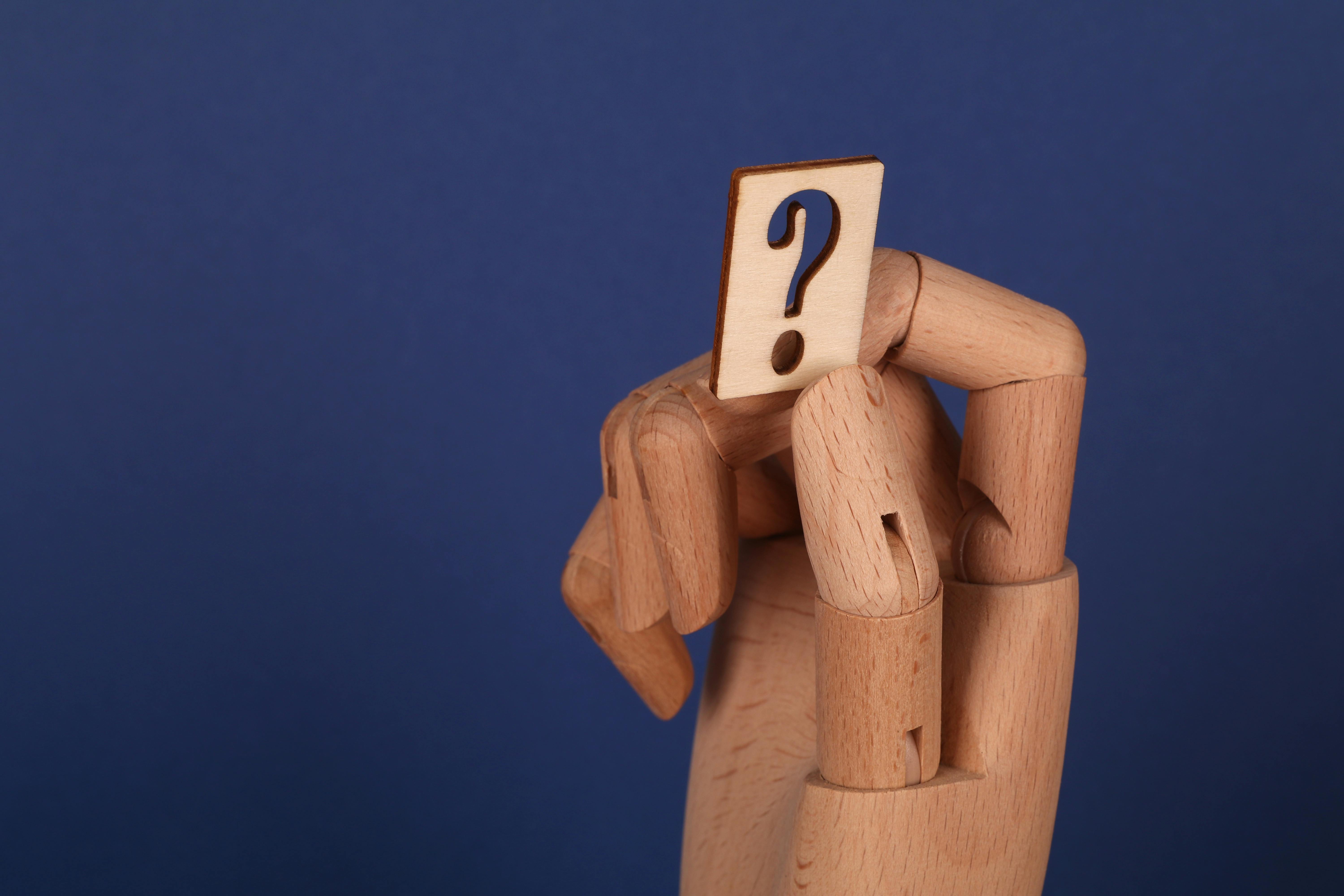The Power of Body Language in Job Interviews
To help you ace your next job interview, we’ve gathered twelve invaluable body language tips from CEOs, HR Managers, and other industry professionals. From understanding the importance of maintaining an open posture to demonstrating respect through stillness, these insights will guide you in making a positive impression. Dive in to discover how body language can significantly influence your performance in a job interview.
- Maintain an Open Posture
- Gesture with Confidence
- Master the Art of Eye Contact
- Practice Real-Time Conversation Skills
- Establish Rapport with Eye Contact and Nods
- Adopt Power Poses for Confidence
- Avoid Nervous Habits
- Smile Authentically with Your Eyes
- Value Thoughtfulness and Active Listening
- Set the Tone with a Strong Handshake
- Mirror the Interviewer’s Gestures
- Demonstrate Respect through Stillness
Maintain an Open Posture
Openness is a very important sense to convey when you’re interviewing for a position, so I always advise applicants to keep their arms and legs uncrossed. If you run cold, like me, you may wrap yourself up physically without even realizing it, but these closed-off poses can convey stubbornness, inflexibility, and standoffishness to people just meeting you.
So, practice keeping one hand on each armrest and one heel touching both front chair legs. Make it a rule, and eventually, it will come naturally, even in an overly air-conditioned office.
Linn Atiyeh, CEO, Bemana
Gesture with Confidence
When firms evaluate people, beyond competence, they look for self-confidence, character, chemistry, charisma (charismatic people always interview better), that you care, and that they can connect with you because they want to trust you.
The easiest body language technique to use to show self-confidence is to smile—a natural smile—as you answer questions. Smiling suggests, “I’ve got this.”
A second body language action is speaking with your hands as you answer questions. Never block your face as you speak or gesture wildly, but use hand gestures to create emphasis for what you are saying. If you are not used to speaking with your hands, don’t try. It has to be natural.
Jeff Altman, Global Job Search Coach, The Big Game Hunter, Inc.
Master the Art of Eye Contact
For me, being able to make eye contact is probably one of the most crucial factors in leaving a positive and lasting impression. You can tell a lot about a person through this non-verbal clue, and it’s important to get it right.
When being interviewed, you want to come across as capable, professional, and approachable, and with the right balance of maintaining eye contact, you can do this. You want to aim for natural, friendly eye contact that feels like a genuine conversation.
But don’t overthink it! You don’t want to come across as intense or aggressive, or make anyone feel uncomfortable. A bit of self-awareness can go a long way!
Katharine Gallagher, Professional Growth Specialist- Education, Career, Recruitment, Productivity, Business, www.katharinegallagher.com
Practice Real-Time Conversation Skills
Coming out of the Covid-19 pandemic means that, for many high-level workers, it’s time to brush up on their in-person communication skills. To help these candidates put their best foot forward in interviews, I implore them to turn off screens for a few days.
Go visit friends in a coffee shop and recall what real-time conversation looks like. It’s relaxed, free-flowing, and involves more eye contact than we’ve become accustomed to. That last element is often underrated. While you don’t need to lock eyes without blinking, looking everywhere but the interviewer’s face makes you look shifty and disinterested—two traits that will turn off any hiring manager.
Travis Hann, Partner, Pender & Howe
Establish Rapport with Eye Contact and Nods
Whether you find yourself in an in-person interview or conducting one remotely over a camera, maintaining consistent eye contact is key. It demonstrates attentiveness and fosters a sense of connection.
Nodding periodically throughout the discussion conveys understanding, signals agreement, and encourages those interviewing you to continue sharing their thoughts. Last, a warm and welcoming atmosphere can be created by incorporating genuine smiles to help establish a positive rapport.
Heidi Hauver, Chief People Officer
Adopt Power Poses for Confidence
As a qualified Neuro-Linguistic Programming coach, I can teach some basic techniques, such as Matching and Mirroring. However, I recommend avoiding amateur psychology, especially before an interview, because adopting unnatural techniques won’t allow you to be yourself.
Instead, I suggest using Amy Cuddy’s groundbreaking work on “power poses.” Standing in a posture that exudes confidence—even when you don’t feel confident—can psychologically prepare you to undertake the interview more effectively.
A typical power pose involves standing upright, shoulders back, and hands on hips, much like the superhero stances we’re familiar with. The purpose is to make yourself physically larger, filling up more space. This simple yet impactful act prepares your mind for a more confident performance and is less inhibited by stress or nervousness.
Geoff Newman, Founder, Starget.co.uk
Avoid Nervous Habits
With body language in a job interview, the golden rule is to project confidence through calm composure. Candidates who are overly nervous will appear less trustworthy and unconfident in their skills.
Avoiding common nervous habits like teeth grinding, crossed arms, fidgeting, and nail-biting can help you convey a sense of assurance and professionalism. This can positively influence your performance during that critical interview.
Nathan Brunner, CEO, Salarship
Smile Authentically with Your Eyes
As a professional linguist, I cannot overestimate the importance of body language. If you want to positively influence your performance in a job interview, be sure your smile is “above the line.”
Smile with your eyes, not just with your mouth. An authentic smile is when a person smiles with their eyes. In effect, the eyes narrow slightly and are less rounded. “Smiling above the line” means smiling above the lip-line, with the eyes as well as the mouth.
Judy Ravin, President and Co-Founder, Accents International, LLC
Value Thoughtfulness and Active Listening
I think it’s important to remember that body language isn’t always a performance indicator, nor does it account for neurodivergent candidates who may not embody the social cues, eye contact, and non-verbal cues that many come to expect.
However, one thing that is consistent among the right-fit candidates I speak with is thoughtfulness. Candidates shouldn’t be afraid to say, “Ooh, great question. Let me think.” This shows me a genuine interest in providing a thoughtful and thorough answer.
I also appreciate a candidate letting their true self show through. Active listening and genuineness mean more to me than a perfectly polished presentation. And nerves are okay, too!
Ali Aguilar, HR Manager, Envisionit
Set the Tone with a Strong Handshake
A strong handshake sets the tone for a good interview; a limp one shows a lack of confidence. Always smile and make eye contact when shaking the interviewer’s hand. Sit upright with good posture and lean slightly in when answering. Also, be careful not to fidget too much with your legs. Cross them at the bottom, and remain mostly still.
Irina Scarborough, Owner, Resumeology
Mirror the Interviewer’s Gestures
Mirroring is an excellent example of a body language technique that can be used during the job interview to earn trust and make a fantastic impression on the interviewer.
This simple psychological trick involves imitating the gestures of our conversation partner. It can take many forms, but it is always based on thoroughly observing the person we speak with. For example, if your interviewer crosses their legs, you can follow that movement after a few seconds. Or you can adjust the pace and volume of your speech with theirs.
The point of mirroring is to adopt this strategy naturally and subtly. It is not about copying the exact behavior but instead adjusting your posture and energy level to theirs to build a connection and showcase your engagement and enthusiasm.
After establishing a sense of understanding, your potential employee will likely consider you a good fit for the organization and the role you are applying for.
Martyna Szcześniak, Community Expert, MyPerfectResume
Demonstrate Respect through Stillness
There’s wisdom in stillness. Make sure not to become a diversion by engaging in behaviors, subconscious or not, where one is fidgeting in their seat or rocking their legs. It’s normal for the human body to feel comfortable, but when the body language becomes a distraction itself, it’s challenging for the audience to focus on what the interviewee has to say during the conversation.
Interviews are a two-way engagement. Both parties want to be heard and respected to explore an opportunity. When one party exhibits visual behaviors that can possibly communicate discomfort or boredom, it becomes easier for the other party to disengage. If there are anxiety issues to work through, then there are ways of navigating forward by practicing with innovative mock interviews, or seeking a trusted source for feedback on how the job candidate comes across under such circumstances.
What we don’t know, we can’t fix. What we do know can help us align our intent, speech, and actions when serving a purpose.
Sasha Laghonh, Founder, Sasha Talks






